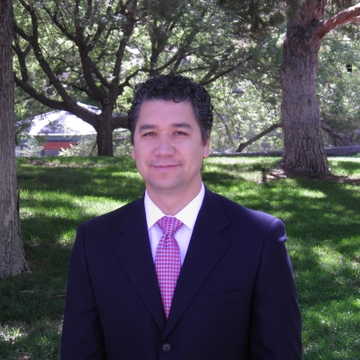New Mexico Approves Master of Science in Anesthesia Program at UNM

Hope for Healing
UNM Researchers Study Non-Invasive Brain Stimulation to Treat Mild Traumatic Brain Injury
University of New Mexico researchers are leading a multi-center study to see whether noninvasive brain stimulation can improve the cognitive symptoms of traumatic brain injury in veterans.
The three-year $4 million trial, funded by the U.S. Department of Defense, will recruit participants from Veterans Affairs hospitals in Albuquerque and Minneapolis, said Davin Quinn, MD, professor in the UNM Department of Psychiatry & Behavioral Sciences, who serves as principal investigator.
‘We’re looking for adult veterans who have experienced a mild traumatic brain injury over the course of their military service, which spans the past 20 years,” he said. “We are interested in injuries that have occurred at any point during that time period and that have led to problems with cognition.”
People experiencing mild traumatic brain injury, such as concussion, may report problems with memory, attention, problem-solving and processing speed that interfere with daily activities.
“We’re excited to get the study off the ground,” said Quinn, is collaborating with Sarah E. Pirio Richardson, MD, chief of neurology at the Raymond G. Murphy VA Medical Center, and Andrew Mayer, PhD, professor at the Mind Research Network, along with colleagues at the University of Minnesota.
The study will compare the effects of transcranial magnetic stimulation (TMS) and transcranial direct current stimulation (tDCS), he said.
“We are interested to see which one has a more significant effect, because they’re quite different,” Quinn said. The results of that comparison will guide the next phase of research.
TMS uses rapid electromagnetic pulses to induce small electrical currents in the left dorsolateral prefrontal cortex, a brain region associated with working memory and selective attention. It has been approved by the FDA for use in treating depression.
With tDCS, researchers use a battery-powered device to deliver a mild direct current to the same brain region via electrodes placed on the head.
The study will have participants undergo functional magnetic resonance imaging (fMRI) prior to starting treatments, as well as after the brain stimulation to see whether there are observable changes in brain activity.
The fMRI scan serves an additional purpose. “We use the brain scans to develop personalized stimulation parameters that each person receives,” Quinn said.
At UNM, Quinn has also studied the use of TMS to alleviate late-life depression. “Our results are suggesting that the connectivity between the involved brain regions is changed by the stimulation,” he said, adding that depression and cognitive impairment seem to be characterized by hyper-connectivity between different brain regions.
“As depression is alleviated or cognitive performance improves, brain networks seem to become more independent from each other,” Quinn said.
Quinn and his colleagues are actively recruiting study participants in Albuquerque. To learn more, please contact the VA Medical Center at (505) 265-1711 x 4935
We use the brain scans to develop personalized stimulation parameters that each person receives.
